
A reporter eyes French designer Gael Langevin's multilingual InMoov robot,
unveiled in May. Legions of robots carry out our instructions unreflectively,
but how do we ensure that they always work in our best interests? Vadim
Ghirda
by Simon Parkin
More than 400 years ago, according to legend, a rabbi knelt by the banks of
the Vltava River in what is now the Czech Republic. He pulled handfuls of clay
out of the water and carefully patted them into the shape of a man.
The Jews of Prague, falsely accused of using the blood of Christians in
their rituals, were under attack. The rabbi, Judah Loew ben Bezalel, decided
that his community needed a protector stronger than any human. He inscribed the
Hebrew word for "truth", emet, onto his creation's forehead and placed a capsule
inscribed with a Kabbalistic formula into its mouth. The creature sprang to
life.
This Golem patrolled the ghetto, protecting its citizens and carrying out
useful jobs: sweeping the streets, conveying water and splitting firewood. All
was harmonious until the day the rabbi forgot to disable the Golem for the
Sabbath, as he was required to, and the creature embarked on a murderous
rampage. The rabbi was forced to scrub the initial letter from the word on the
Golem's forehead to make met, the Hebrew word for "death". Life slipped from the
Golem and he crumbled into dust.
This cautionary tale about the risks of building a mechanical servant in
man's image has gained fresh resonance in the age of artificial intelligence.
Legions of robots carry out our instructions unreflectively. How do we ensure
that these creatures, regardless of whether they're built from clay or silicon,
always work in our best interests? Should we teach them to think for themselves?
And if so, how are we to teach them right from wrong?
In the 1956 film Forbidden Planet, Robby the Robot makes its screen debut,
the first of many appearances. It is multiskilled and incapable of harming
humans. Archive Photos
In 2017, this is an urgent question. Self-driving cars have clocked up
millions of kilometres on our roads while making autonomous decisions that might
affect the safety of other human road-users. Roboticists in Japan, Europe and
the United States are developing service robots to provide care for the elderly
and disabled. One such robot carer, which was launched in 2015 and dubbed Robear
(it sports the face of a polar-bear cub), is strong enough to lift frail
patients from their beds; if it can do that, it can also, conceivably, crush
them. Since 2000 the US Army has deployed thousands of robots equipped with
machineguns, each one able to locate targets and aim at them without the need
for human involvement (they are not, however, permitted to pull the trigger
unsupervised).
Sense of dread
Public figures have also stoked the sense of dread surrounding the idea of
autonomous machines. Elon Musk, the tech entrepreneur, claimed that artificial
intelligence was the greatest existential threat to mankind. Last northern
summer the White House commissioned four workshops for experts to discuss this
moral dimension to robotics. As Rosalind Picard, director of the Affective
Computing Group at the Massachusetts Institute of Technology puts it: "The
greater the freedom of a machine, the more it will need moral standards."
In a futuristic office complex on the meandering Vltava River, near where
the rabbi sculpted his Golem, an orderly bank of computers hums. They make for
unlikely teachers, but they are as dedicated as any human to the noble task of
education. Their students don't sit in front of each computer's screen, but
rather on their hard drives.
This virtual school, which goes by the name of GoodAI, specialises in
educating artificial intelligences (AIs): teaching them to think, reason and
act. GoodAI's overarching vision is to train artificial intelligences in the art
of ethics. "This does not mean pre-programming AI to follow a prescribed set of
rules where we tell them what to do and what not to do in every possible
situation," says Marek Rosa, a successful Slovak video-game designer and
GoodAI's founder, who has invested $US10 million in the company. "Rather, the
idea is to train them to apply their knowledge to situations they've never
previously encountered."

The Golum was useful to the Jews of Prague until its programming was
neglected and it turned murderous. Lonely Planet
Experts agree that Rosa's approach is sensible. "Trying to pre-program
every situation an ethical machine may encounter is not trivial," explains Gary
Marcus, a cognitive scientist at New York University and chief executive officer
and founder of Geometric Intelligence. "How, for example, do you program in a
notion like 'fairness' or 'harm'?"
Neither, he points out, does this hard-coding approach account for shifts
in beliefs and attitudes. "Imagine if the US founders had frozen their values,
allowing slavery, fewer rights for women, and so forth? Ultimately, we want a
machine able to learn for itself."
Blank slate
Rosa views AI as a child, a blank slate onto which basic values can be
inscribed, and which will, in time, be able to apply those principles in
unforeseen scenarios. The logic is sound. Humans acquire an intuitive sense of
what's ethically acceptable by watching how others behave (albeit with the
danger that we may learn bad behaviour when presented with the wrong role
models).
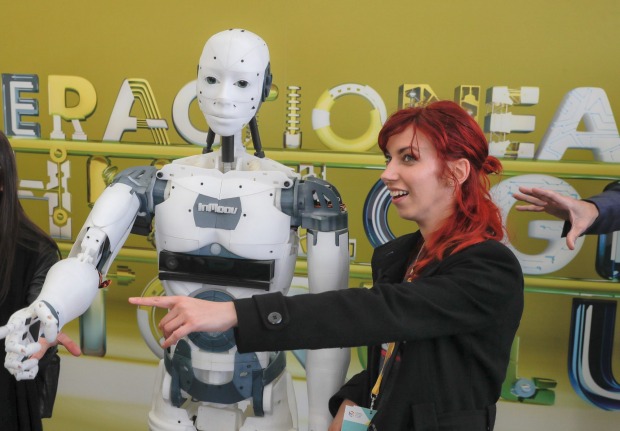
A member of the public admires Gael Langevin's InMoov robot, which is based
on the first prosthetic hand made on a 3D printer. Vadim Ghirda
GoodAI polices the acquisition of values by providing a digital mentor, and
then slowly ramps up the complexity of situations in which the AI must make
decisions. Parents don't just let their children wander into a road, Rosa
argues. Instead they introduce them to traffic slowly. "In the same way we
expose the AI to increasingly complex environments where it can build upon
previously learnt knowledge and receive feedback from our team."
GoodAI is just one of a number of institutions dedicated to understanding
the ethical dimension of robotics that have sprung up across the world in recent
years. Many of these bodies enjoy grand, foreboding titles: The Future of Life
Institute, The Responsible Robotics Group and The Global Initiative on Ethical
Autonomous Systems. There is a number of competing ideas in circulation about
how best to teach morality to machines. Rosa champions one, Ron Arkin
another.
Arkin is a balding roboethicist in his mid-60s, with eyes that droop under
panoramic spectacles. He teaches computer ethics at Georgia Tech in sweltering
Atlanta, but his work is not confined to the classroom.
Arkin's research has been funded by a range of sources, including the US
Army and the Office of Naval Research. In 2006, he received funding to develop
hardware and software that will make robotic fighting machines capable of
following ethical standards of warfare. He has argued that robot soldiers can be
ethically superior to humans. After all, they cannot rape, pillage or burn down
a village in anger.
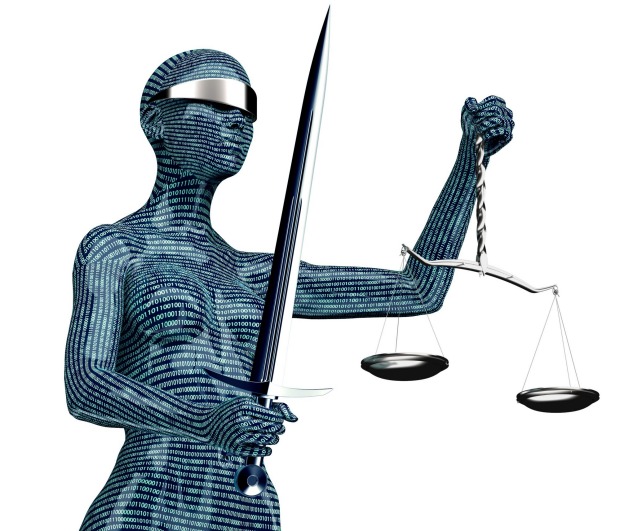
Roboticists in Japan, Europe and the United States are developing service
robots to provide care for the elderly and disabled. But are robot lawyers
possible? Posteriori
Teaching robots how to behave on the battlefield may seem straightforward,
since nations create rules of engagement by following internationally agreed
laws. But not every potential scenario on the battlefield can be foreseen by an
engineer, just as not every ethically ambiguous situation is covered by, say,
the Ten Commandments.
Tactical v moral decisions
Should a robot, for example, fire on a house in which a high-value target
is breaking bread with civilians? Should it provide support to a group of five
low-ranking recruits on one side of a besieged town, or one high-ranking officer
on the other? Should the decision be made on a tactical or moral basis?
To help robots and their creators navigate such questions on the
battlefield, Arkin has been working on a model that differs from that of GoodAI.
The "ethical adapter", as it's known, seeks to simulate human emotions, rather
than emulate human behaviour, in order to help robots to learn from their
mistakes. His system allows a robot to experience something similar to human
guilt.
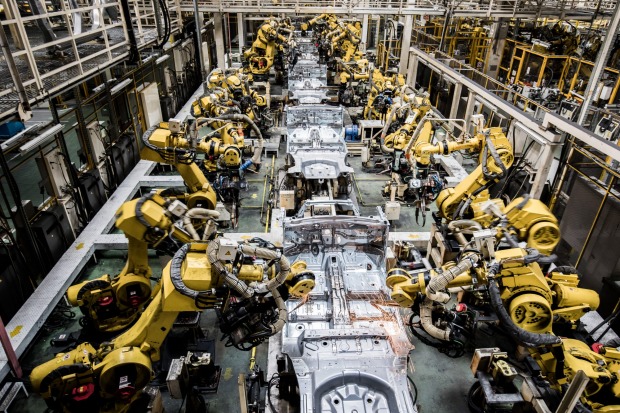
Robotic arms work on car production for Suzuki. Self-driving cars have
clocked up millions of kilometres on our roads while making autonomous decisions
that might affect the safety of human road-users. Akos Stiller
"Guilt is a mechanism that discourages us from repeating a particular
behaviour," he explains. It is, therefore, a useful learning tool, not only in
humans, but also in robots.
"Imagine an agent is in the field and conducts a battle damage assessment
both before and after firing a weapon," Arkin says. "If the battle damage has
been exceeded by a significant proportion, the agent experiences something
analogous to guilt."
The sense of guilt increases each time, for example, there's more
collateral damage than was expected. "At a certain threshold the agent will stop
using a particular weapon system. Then, beyond that, it will stop using weapons
systems altogether," he adds. While the guilt that a robot might feel is
simulated, the models are nevertheless taken from nature and, much like in
humans, have a tripartite structure: a belief that a norm has been violated, a
concern about one's actions, and a desire to return to a former state.
It's an ingenious solution but not one without issues. For one, the guilt
model requires things to go wrong before the robot is able to modify its
behaviour. That might be acceptable in the chaos of battle, where collateral
damage is not entirely unexpected. But in civilian homes and hospitals, or on
the roads, the public's tolerance for deadly robotic mistakes is far lower. A
killer robot is more likely to be disassembled than offered the chance to learn
from its mistakes.
Inspiration in the library
From virtual classrooms to simulated guilt, the approaches to teaching
robot morality are varied, embryonic and, in each case, accompanied by distinct
problems. At Georgia Tech, Mark Riedl, the director of the Entertainment
Intelligence Lab, is trying out a method that finds its inspiration not in the
classroom but in the library.
By reading thousands of stories to AIs, and allowing them to draw up a set
of rules for behaviour based on what they find, Riedl believes that we can begin
to teach robots how to behave in a range of scenarios from a candlelit dinner to
a bank robbery. A range of organisations and companies, including DARPA, the US
Department of Defence's R&D agency, the US Army, Google and Disney, funds
the team's work.
When we meet for a burger in a restaurant close to his laboratory, Riedl
agrees with GoodAI's basic philosophy. "It's true: the answer to all of this is
to raise robots as children," he says. "But I don't have 20 years to raise a
robot. That's a very time-consuming and expensive process. Just raising one kid
is all I can handle. My idea was to use stories as a way of short-circuiting
this learning process."
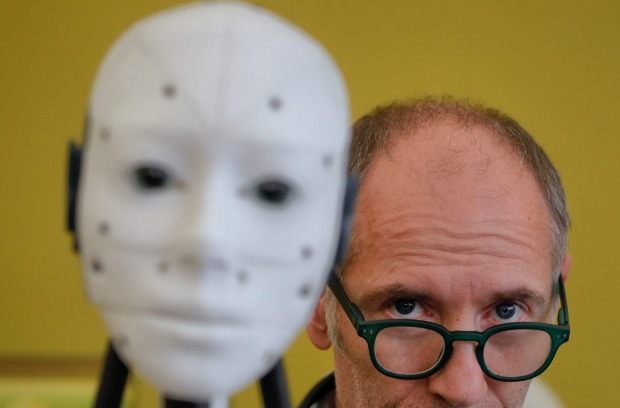
French designer Gael Langevin unveils his InMoov robot at a technology fair
in Bucharest. As technologies commingle and are administered by AIs, the danger
is our technological progress has outpaced our moral preparedness. Vadim
Ghirda
Riedl arrived at this idea while researching how stories might be used to
teach AIs the rules of human social situations. "If Superman dresses up as Clark
Kent and meets someone for dinner, you have this nice little demonstration of
what people do when they go into a restaurant," says Riedl. "They get a seat.
They order their drinks before their food. These are social values, in terms of
the order of things that we like to do things in. Now, there's usually no
ethical dilemma in terms of restaurants. But there are cues, such as: 'Why
didn't they go in the kitchen and get the food?' I couldn't really tell an AI
why not, but I can show it that's not what you're supposed to do."
Riedl crowd-sources stories on Amazon's Mechanical Turk. "We instruct
Amazon's workers to describe a typical story about a given topic such as going
to a restaurant," he explains. Participants are sometimes given a character and,
using a specially created form, must fill in blank fields with snippets of story
(e.g. "Mary walked into the restaurant"; "Mary waited to be seated"; "Mary took
off her coat and ordered a drink").
The natural-language processing algorithms look for sentences from
different stories that are similar to each other and, from that information,
begin to draw conclusions about social rules and norms.
Algorithms to moral framework
An AI that reads 100 stories about stealing versus not stealing can examine
the consequences of these stories, understand the rules and outcomes, and begin
to formulate a moral framework based on the wisdom of crowds (albeit crowds of
authors and screenwriters).
"We have these implicit rules that are hard to write down, but the
protagonists of books, TV and movies exemplify the values of reality. You start
with simple stories and then progress to young-adult stories. In each of these
situations you see more and more complex moral situations," Riedl says.
Though it differs conceptually from GoodAI's, Riedl's approach falls into
the discipline of machine learning. "Think about this as pattern matching, which
is what a lot of machine learning is," he says. "The idea is that we ask the AI
to look at a thousand different protagonists who are each experiencing the same
general class of dilemma. Then the machine can average out the responses, and
formulate values that match what the majority of people would say is the
'correct' way to act."
There's a certain poetic symmetry to the solution: from the Golem to
Frankenstein's monster and beyond, humans have always turned to stories when
imagining the monstrous impact of their creations. Just as there are gloomy
conclusions to these stories, there is also a worry that, if you feed the AI
only dark plot lines, you could end up training it to be evil.
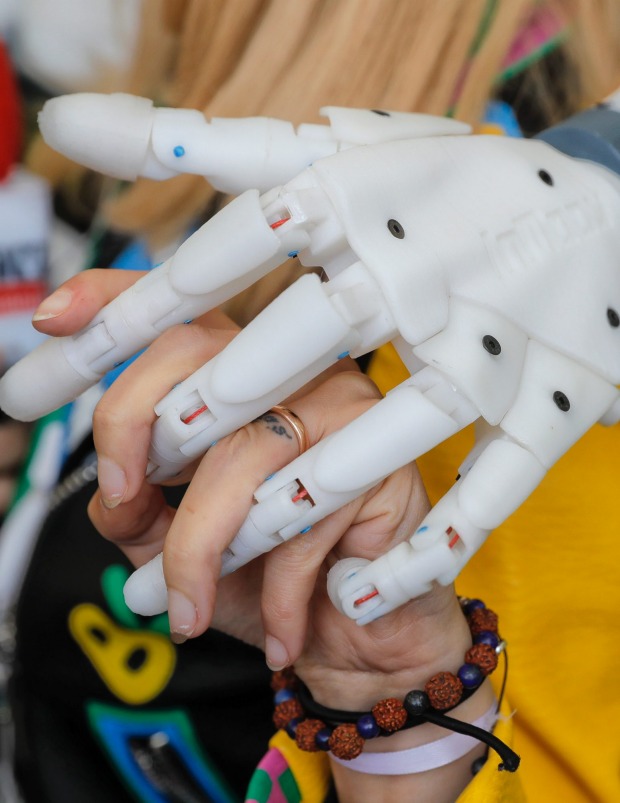
A woman holds the hand of the InMoov robot. Cautionary tale about the risks
of building a mechanical servant in man's image has gained fresh resonance in
the age of artificial intelligence. Vadim Ghirda
"The only way to corrupt the AI would be to limit the stories in which
typical behaviour happens somehow," says Riedl. "I could cherry-pick stories of
anti-heroes or ones in which bad guys all win all the time. But if the agent is
forced to read all stories, it becomes very, very hard for any one individual to
corrupt the AI."
The approach seems to be proving remarkably effective. "We know that the
system is learning from the stories in two ways," says Riedl. "First, we ran an
evaluation and asked people to judge the rules that the system learnt. Rules are
things like 'when going to a restaurant, ordering drinks comes before ordering
food'. Second, the system can generate stories, and these stories can be judged
by humans."
Common sense and surprises
For the most part, the team has found that the knowledge learnt by the
system is typically common sense. But there have been a few surprises. "When we
trained our system about going on dates to movie theatres, the system learnt
that 'kissing' was an important part of the schema. We weren't expecting that,
but in retrospect it's not surprising."
To the engineers at Audi building self-driving cars, or the technicians at
BAE Systems building autonomous weapons, teaching AIs when it is socially
appropriate to kiss or to queue might not seem directly relevant to their work.
But most advances in the fields of genetics, nanotechnology and
neuropharmacology may not, when considered in isolation, appear to have a moral
dimension, let alone a social one. Yet when the resulting technologies commingle
and are administered by AIs, the danger is that we discover that our
technological progress has outpaced our moral preparedness.
Riedl claims that we are at a crucial moment in history and, as a society,
we are faced with a simple choice. "We can say we can never have a perfect
robot, and because there's any sort of danger we should never do anything," he
says. "Or we can say: 'Let's do our best and try to mitigate the result.' We're
never going to have a perfect self-driving car. It's going to have accidents.
But it's going to have fewer accidents than a human. So … our goal should be to
be no worse than humans. Just maybe, it could be possible to be better than
humans."
In science fiction, the moment at which a robot gains sentience is
typically the moment at which we believe that we have ethical obligations
towards our creations. An iPhone or a laptop may be inscrutably complex compared
with a hammer or a spade, but each object belongs to the same category: tools.
And yet, as robots begin to gain the semblance of emotions, as they begin to
behave like human beings, and learn and adopt our cultural and social values,
perhaps the old stories need revisiting.
At the very least, we have a moral obligation to figure out what to teach
our machines about the best way in which to live in the world. Once we've done
that, we may well feel compelled to reconsider how we treat them.













